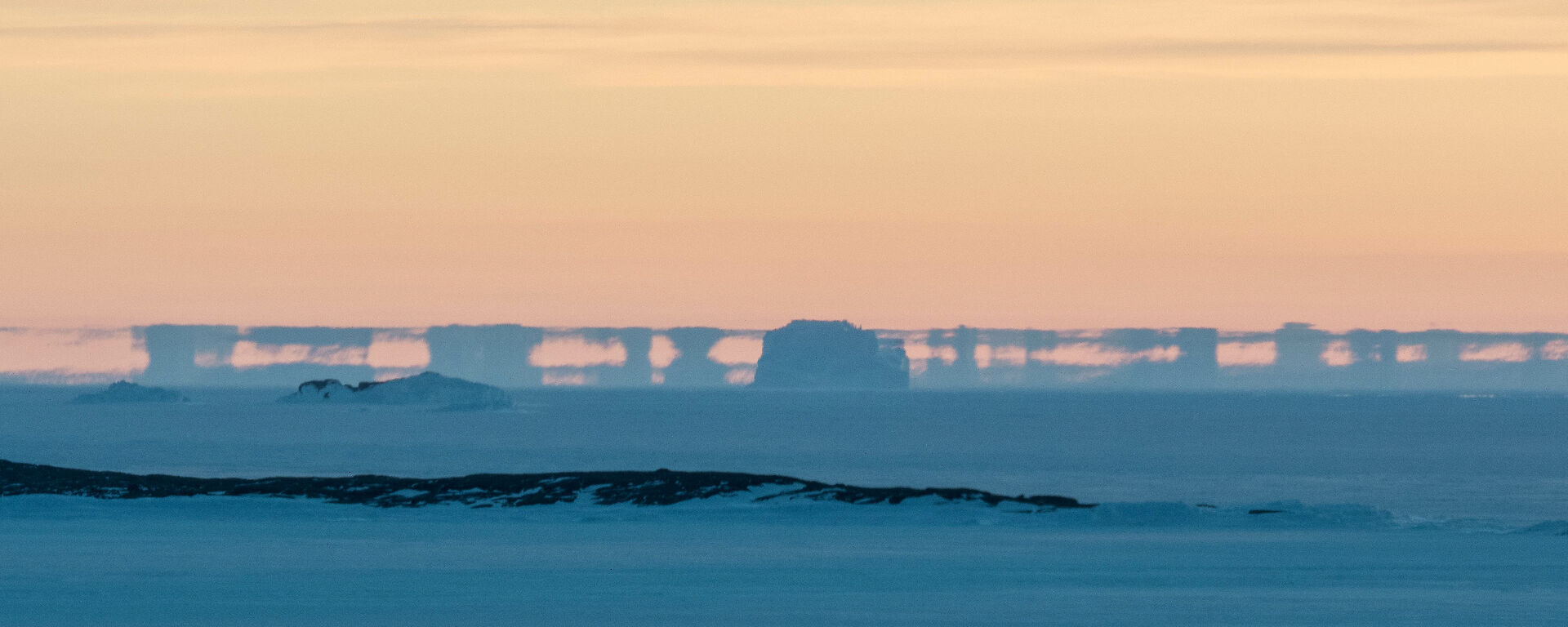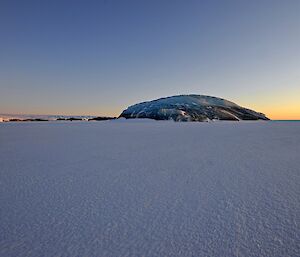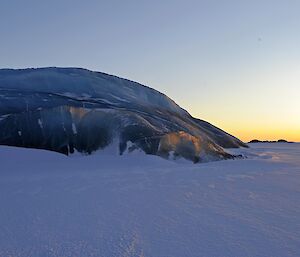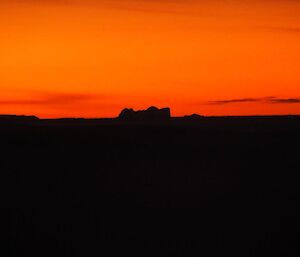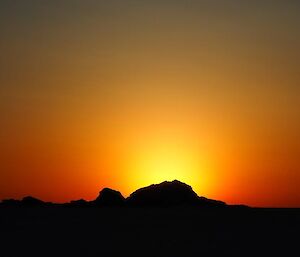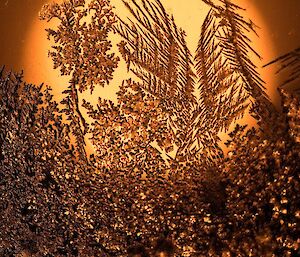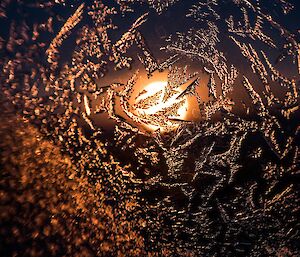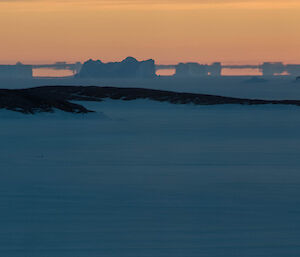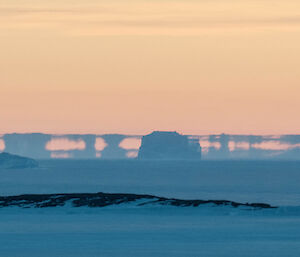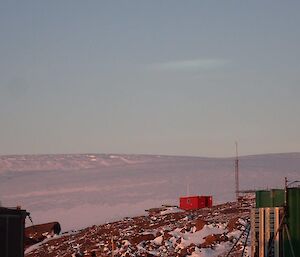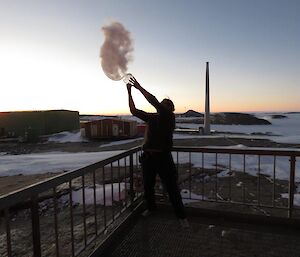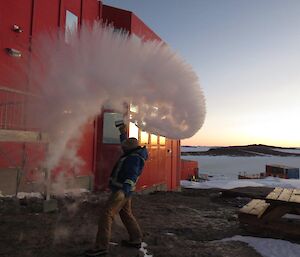The last week has seen us with less than our usual amount of wind and very cold temperatures. The lowest we got to was −33.9°C on Tuesday, very close the the all-time record of −36°C, which I guess one should expect from winter in Antarctica. This has brought with it different weather phenomena including a Fata Morgana, which was spotted on the horizon on Monday, and BoM Tech Pat spotted a ‘polar stratospheric’ cloud. (Apologies, my picture is rubbish compared to other ones available on the net, but you can see that it doesn’t look like any other cloud you’ve ever seen.)
For those that want to know the details:
According to Wikipedia:
A ‘Fata Morgana’ is most commonly seen in polar regions, especially over large sheets of ice that have a uniform low temperature. It may, however, be observed in almost any area. In polar regions the Fata Morgana phenomenon is observed on relatively cold days. In deserts, over oceans, and over lakes, however, a Fata Morgana may be observed on hot days.
To generate the Fata Morgana phenomenon, the thermal inversion has to be strong enough that the curvature of the light rays within the inversion layer is stronger than the curvature of the Earth.[1] Under these conditions, the rays bend and create arcs. An observer needs to be within or below an atmospheric duct in order to be able to see a Fata Morgana.[2]
As you can see from the photos, it looks like we had many more icebergs on the horizon than we actually do.
And Wikipedia again:
Polar stratospheric clouds (PSCs), also known as nacreous clouds (/ˈneɪkriəs/, from nacre, or mother of pearl, due to its iridescence), are clouds in the winter polar stratosphere at altitudes of 15,000–25,000 m (49,000–82,000 ft). They are best observed during civil twilight, when the Sun is between 1 and 6 degrees below the horizon, as well as in winter and in more northerly latitudes. They are implicated in the formation of ozone holes. The effects on ozone depletion arise because they support chemical reactions that produce active chlorine which catalyzes ozone destruction, and also because they remove gaseous nitric acid, perturbing nitrogen and chlorine cycles in a way which increases ozone depletion.
The stratosphere is very dry; unlike the troposphere, it rarely allows clouds to form. In the extreme cold of the polar winter, however, stratospheric clouds of different types may form, which are classified according to their physical state and chemical composition.
Due to their high altitude and the curvature of the surface of the Earth, these clouds will receive sunlight from below the horizon and reflect it to the ground, shining brightly well before dawn or after dusk.
PSCs form at very low temperatures, below −78 °C (−108 °F). These temperatures can occur in the lower stratosphere in polar winter. In the Antarctic, temperatures below −88 °C (−126 °F) frequently cause type II PSCs. Such low temperatures are rarer in the Arctic. Forward-scattering of sunlight within the clouds produces a pearly-white appearance.
So now you know!
Once the temperature passed −28°C, it was also time to try our hand at turning boiling water into clouds. To do this you need very cold, dry air (of which we have plenty) and water at 100°C. Boiling water is closer to the point of evaporation than cold water. Cold air is very dense, which makes its capacity to hold water vapour molecules very low. Therefore, when hot water is thrown into extremely cold air, the smallest droplets are able to cool and evaporate in a dramatic cloud before they reach the ground. Neat party trick!

